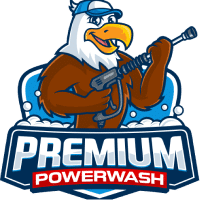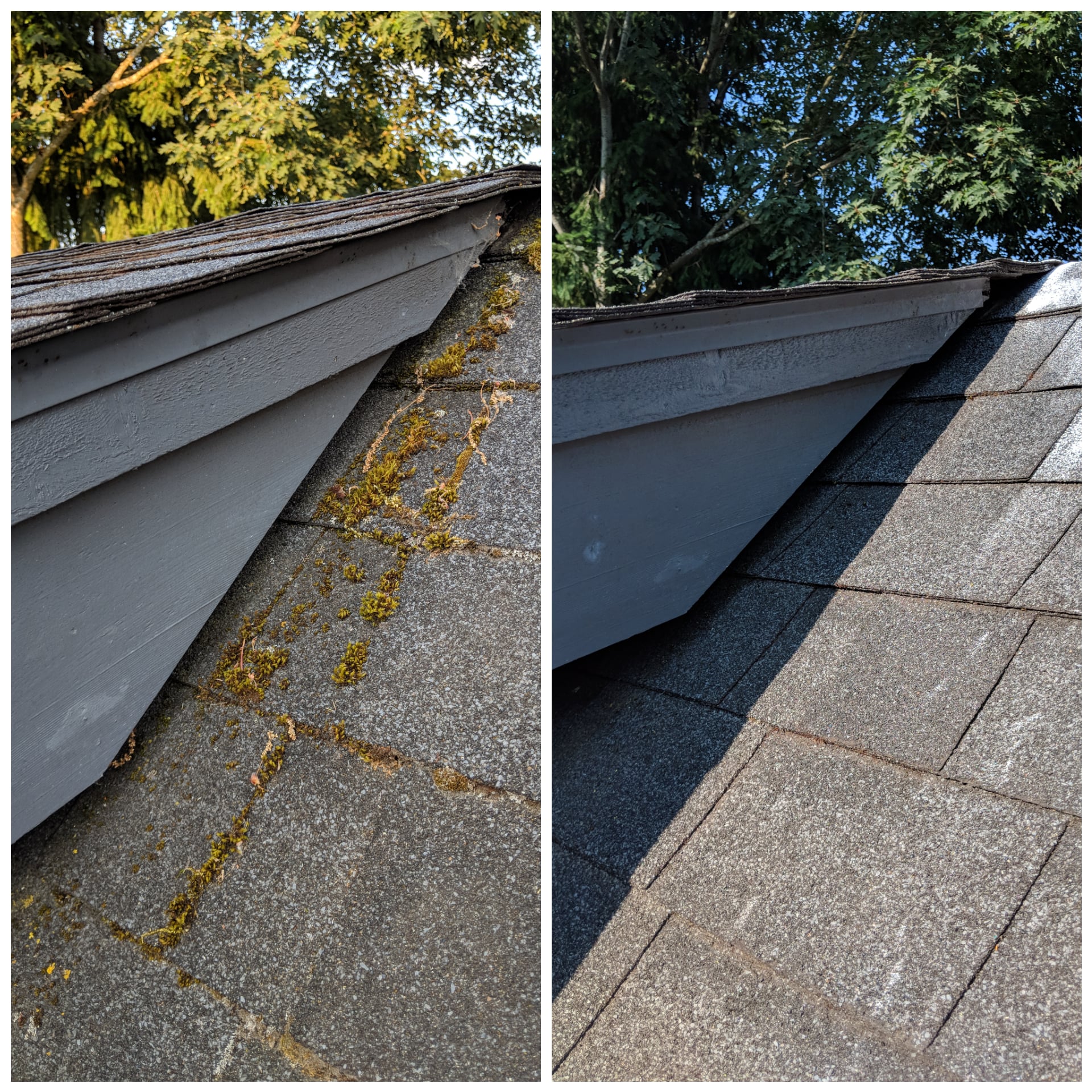Roof cleaning is an essential part of home maintenance, especially in climates like Tualatin, OR, where moss and algae can quickly overrun a roof’s surface. It’s not just about aesthetics; a well-maintained roof can also significantly impact the air quality and structural integrity of your home. However, the benefits of a clean roof should never come at the expense of safety. As professionals in the industry, we understand that a safe work environment is paramount to every roof cleaning job we undertake.
In this comprehensive guide, we’ll walk you through the vital safety measures we follow to ensure a secure and successful roof cleaning process. Whether you’re a homeowner looking for tips or a roofing maintenance professional brushing up on safety protocols, this guide is designed with you in mind.
Understanding the Risks Associated with Roof Cleaning
Before we delve into the safety procedures, it’s crucial to recognize the inherent risks with roof cleaning. Some of the major safety concerns include:
- Falling: Roof cleaners often work at considerable heights, which increases the risk of falling.
- Chemical Exposure: Some cleaning agents can be hazardous, which is why proper handling and safety equipment are non-negotiable.
- Electrocution: The presence of power lines and the use of pressure washers can pose electrocution hazards.
- Roof Integrity: Walking on roofs, especially those with existing damage, can further compromise their structural integrity.
It’s clear that a systematic approach to safety is essential for safeguarding against these risks.
Essential Safety Measures for Roof Cleaning
Risk Assessment and Planning
Every roof cleaning job starts with a thorough risk assessment. Before any work begins, we take the time to:
- Assess the condition of the roof and identify any potential hazards.
- Evaluate the weather forecast to avoid working during adverse conditions.
- Plan the cleaning method depending on the type of roof and the nature of the cleaning required.
This preparatory phase is critical for the safety and success of the cleaning project.
Training and Certification
All team members involved in the roof cleaning process must receive comprehensive training on:
- Proper handling and application of cleaning solutions.
- Correct usage of equipment, such as power washers and ladders.
- Emergency procedures, including what to do in the event of a fall or chemical exposure.
We also ensure that our team is certified in CPR and first aid to tackle any unforeseen medical emergencies.
Fall Protection Systems
When working at heights, it’s mandatory for our team to use fall protection systems, such as:
- Personal fall arrest systems (PFAS), including harnesses, lanyards, and anchor points.
These systems are rigorously inspected and maintained to meet safety standards.
Chemical Handling and Application
Protecting both the cleaning crew and the environment from potentially harmful chemicals is imperative. We handle this by:
- Using eco-friendly, biodegradable cleaning products when possible.
- Diluting chemicals to the correct concentration to minimize risk and environmental impact.
- Implementing strict protocols for handling, storing, and disposing of cleaning solutions.
Roof Surface Evaluation
Before any physical cleaning takes place, we assess the condition of the roof surface:
- Checking for any loose or damaged shingles that could present a falling hazard or potential injury.
- Looking out for any animals or nests that might be present on the roof.
This evaluation ensures that the cleaning process is as safe as possible and minimizes disruption to local wildlife.
Equipment Safety and Maintenance
All equipment used in the cleaning process undergoes regular inspection and maintenance to:
- Ensure that it’s in good working condition and won’t malfunction during use.
- Prevent any accidents due to faulty equipment.
Our team is also trained to recognize and report any equipment issues immediately.
Secure the Job Site
Before starting any cleaning operation, we:
- Secure the area around the building to prevent any accidental falls.
- Clear the working space of any obstruction that could lead to tripping or falling.
This adds an important layer of safety to the cleaning process.
Implementing Safety Measures in Action
When putting safety measures into practice, we focus on several key aspects:
- Team Communication: Clear communication is key to coordinating complex tasks at varying altitudes.
- Supervision: An experienced supervisor oversees the entire operation to ensure every safety measure is being followed.
- Emergency Response Planning: Our team is prepared with an actionable emergency response plan, including the use of a safety observer.
By addressing these elements, we can effectively mitigate many of the risks associated with roof cleaning.
Post-Cleaning Safety Protocols
As the cleaning phase concludes, we remain diligent in our safety protocols:
- Equipment Storage: After usage, all equipment is immediately stored away to prevent accidents.
- Site Clean-Up: We thoroughly clean the job site to minimize the risk of slips and falls.
It’s not just about the cleaning process; it’s about ensuring that the entire operation is conducted safely from start to finish.
Conclusion: Safety is Non-Negotiable
In areas where roof cleaning is a vital part of home maintenance, such as Tualatin, OR, ensuring a safe process is essential. Safety is not just a checklist item; it’s a core value that’s embedded in every aspect of our operation. Whether you’re looking to hire a professional service or undertake the task yourself, we hope this guide has shed light on the importance of safety in roof cleaning.
By embracing a culture of safety, we not only protect the well-being of our team but also guarantee high-quality, incident-free services for our clients. Remember, when it comes to roof cleaning, safety should always be your highest priority.

